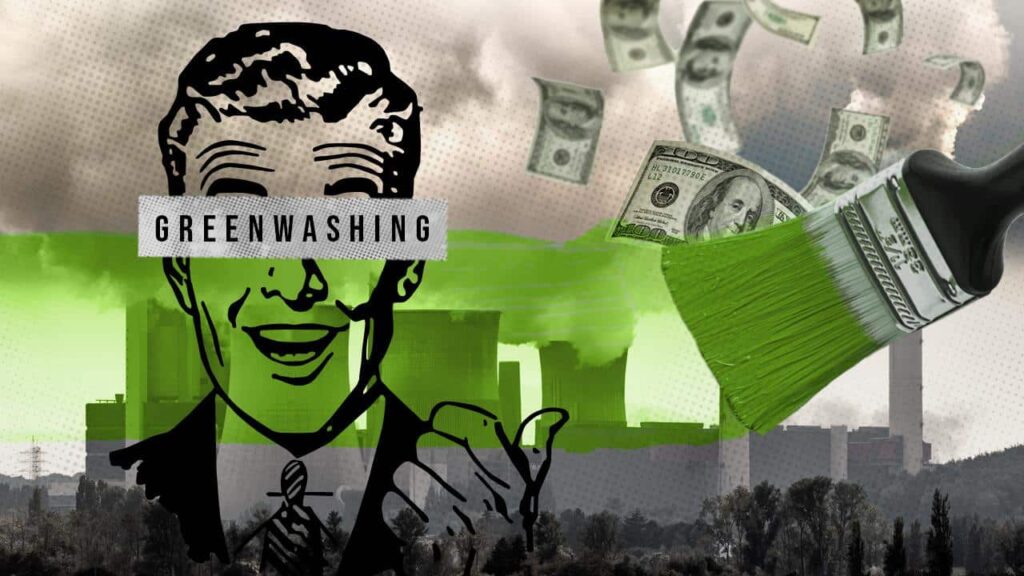Green sells—but faking it costs you more.
Before you slap a leaf on your packaging, read this.Your Anti Playbook to Corporate Greenwashing
Greenwashing is becoming a buzzword in today’s eco-conscious market, but it comes at a significant cost. Before you slap a leaf on your product packaging, read this.
Sustainability sells. That’s why green marketing claims are everywhere—from eco-friendly shampoo bottles to boardroom sustainability reports. However, there’s a costly mistake that many companies are making in their rush to capitalize on this trend: greenwashing.
While it may seem like a quick win for brand image, greenwashing often backfires. Misleading claims don’t just erode consumer trust—they invite regulatory scrutiny, damage investor confidence, and distract companies from real opportunities for innovation and growth. In an era where ESG (Environmental, Social, and Governance) performance is increasingly linked to capital access, greenwashing is not only risky but also an inefficient strategy.
Whether you’re a consumer trying to cut through the green noise or a company aiming to do it right—consider this your Greenwashing Anti-Playbook.
These are the 5 key red flags to spot when a company is greenwashing. If you’re seeing them, you’re likely looking at strategy dressed up in green.
1. Vague, Unsubstantiated Claims in Green Marketing
When companies use buzzwords like “natural,” “green,” or “eco-friendly” without providing specific evidence, be skeptical. These terms are often vague and unverified. Without standardized definitions, these claims lack transparency and can easily mislead consumers.
Example: H&M’s “Conscious Collection” faced scrutiny when a 2021 report revealed that 96% of their sustainability claims were misleading. The collection’s vague environmental benefits couldn’t be substantiated, leading to consumer distrust.
2. Misleading Imagery and Green Aesthetics
The so-called “leaf effect” involves using green colours, nature imagery, and environmental symbols to create an illusion of sustainability—without backing it up with real actions.
Example: Take bottled water brands like Fiji or Voss. These brands often use labels featuring serene mountains and clear streams. But the truth? Their business model is built on the continuous sale of single-use plastic bottles, contributing significantly to pollution and microplastics.
3. Hidden Trade-offs in Sustainability Efforts
Some companies highlight a minor environmental achievement while ignoring the broader environmental impact. These “green” claims are designed to distract from the larger issues at play.
Example: McDonald’s 2019 Paper Straws initiative in the UK generated positive publicity, but the straws turned out to be non-recyclable in standard waste systems. This made the move less environmentally friendly than it seemed, as the plastic straws they replaced were easier to recycle.
4. False Certifications and Fabricated Green Claims
Companies may display fake certifications or create meaningless “eco-labels” to deceive consumers into thinking their products are environmentally friendly.
Example: The Volkswagen emissions scandal (2015) revealed how the company used “defeat devices” to manipulate diesel vehicle emissions tests while marketing them as “clean diesel.” These vehicles emitted up to 40 times the permissible nitrogen oxides during normal driving, despite their misleading “eco-friendly” marketing.
5. Irrelevant Environmental Claims
Sometimes, companies tout environmental benefits that are technically true but insignificant in the context of current environmental standards.
Example: Products labeled “CFC-free” when chlorofluorocarbons (CFCs) have been banned for decades. While technically true, this claim is no longer meaningful in today’s market.
Why Greenwashing is a Strategic Liability
Greenwashing isn’t just a PR blunder—it’s a strategic risk. In today’s market, where sustainability is a key driver of efficiency, risk management, and long-term success, pretending to be green can hurt your bottom line. Investors and stakeholders are demanding real proof of sustainability. Want to know more? Click here to read the real reasons greenwashing can cost your business.
Conclusion: How to Avoid Greenwashing Accusations and Stay Ahead of the Game
Faking sustainability isn’t just damaging to your reputation—it’s a flawed business strategy. In today’s competitive market, genuine environmental responsibility has become too valuable to fake. Greenwashing isn’t just a risk—it’s an inefficient approach that can harm your brand. To avoid it, businesses must align their sustainability efforts with real impact, transparency, and measurable goals.
For businesses committed to authentic sustainability, it’s crucial to:
- Be transparent about your sustainability practices and environmental efforts.
- Substantiate all claims with verifiable data and legitimate certifications.
- Prioritize meaningful environmental improvements that align with your core business model.
By embedding authentic sustainability into your brand’s DNA, you’ll protect your reputation, mitigate the risks of greenwashing, and position your business for long-term success in a market increasingly driven by sustainability and ESG performance.
Sources:
Devrix. (2021). How Green Tech Companies Can Build Trust with Consumers. Retrieved from https://devrix.com/tutorial/green-tech-companies-trust/
Dazzle Platform. (2020). Communicating Your Sustainability Report: How to Effectively Engage Your Stakeholders. Retrieved from https://dazzle-platform.com/blog/communicating-your-sustainability-report-how-to-effectively-engage-your-stakeholders/
Stanford Social Innovation Review. (2019). Cultivating the Green Consumer: How to Shape Sustainable Consumer Behaviour. Retrieved from https://ssir.org/articles/entry/cultivating_the_green_consumer#
ProfileTree. (2020). 10 Strategies for Sustainability Marketing in a Green World. Retrieved from https://profiletree.com/strategies-for-sustainability-marketing-in-a-green-world/
SK Agency. (2021). Combating Greenwashing: Tips for Authentic Communication. Retrieved from https://www.sk.agency/combating-greenwashing-tips-for-authentic-communication/
Bcome. (2021). Put Your Green Claims to the Test: Dos and Don’ts in Communicating Your Sustainable Performance. Retrieved from https://bcome.biz/blog/put-your-green-claims-to-the-test-dos-and-donts-in-communicating-your-sustainable-performance/
SSRN. (2019). Greenwashing: How Deceptive Marketing Practices Impact Consumer Trust. Retrieved from https://papers.ssrn.com/sol3/papers.cfm?abstract_id=3465669
Harvard Business Review. (2019). Actually, Consumers Do Buy Sustainable Products. Retrieved from https://hbr.org/2019/06/research-actually-consumers-do-buy-sustainable-products
SAGE Journals. (2019). The Role of Sustainability Marketing in Consumer Decision-Making. Retrieved from https://journals.sagepub.com/doi/10.1177/0022242919825649
Harvard Business Review. (2019). The Elusive Green Consumer: Why Green Claims Don’t Always Translate to Green Purchases. Retrieved from https://hbr.org/2019/07/the-elusive-green-consumer

Kailey Young
I am passionate about exploring the intersection of circular economy and sustainable business practices. With a focus on analysing market trends and bridging emerging, innovative ideas from academia, I translate them into actionable, practical tools and explore real-world case studies to help businesses integrate sustainability into their strategies for long-term growth and environmental impact.



